Abstract
Kaiser Permanente Northwest Region is a prepaid group practice health maintenance organization. Among the employed are 65 physician assistants (PAs) who work in primary care and in certain subspecialties. Kaiser Permanente was one of the first managed health care systems to use PAs and has contributed to the historical documentation of their effectiveness. An interest in experimenting with new forms of health care delivery as well as enabling State legislation has contributed to an expanded role for nonphysician providers. Together with nurse practitioners, PAs comprise 20 percent of the primary care staff and write 25 percent of the prescriptions for the membership. The use of PAs in managed health care settings will likely increase to meet growing primary care demands. Analysts have found the cost of a PA ranges from 25 percent to 53 percent of the cost of a physician. PAs are capable of providing care for 86 percent of the diagnoses seen in outpatient primary care setting, and patient acceptance is high.
Full text
PDF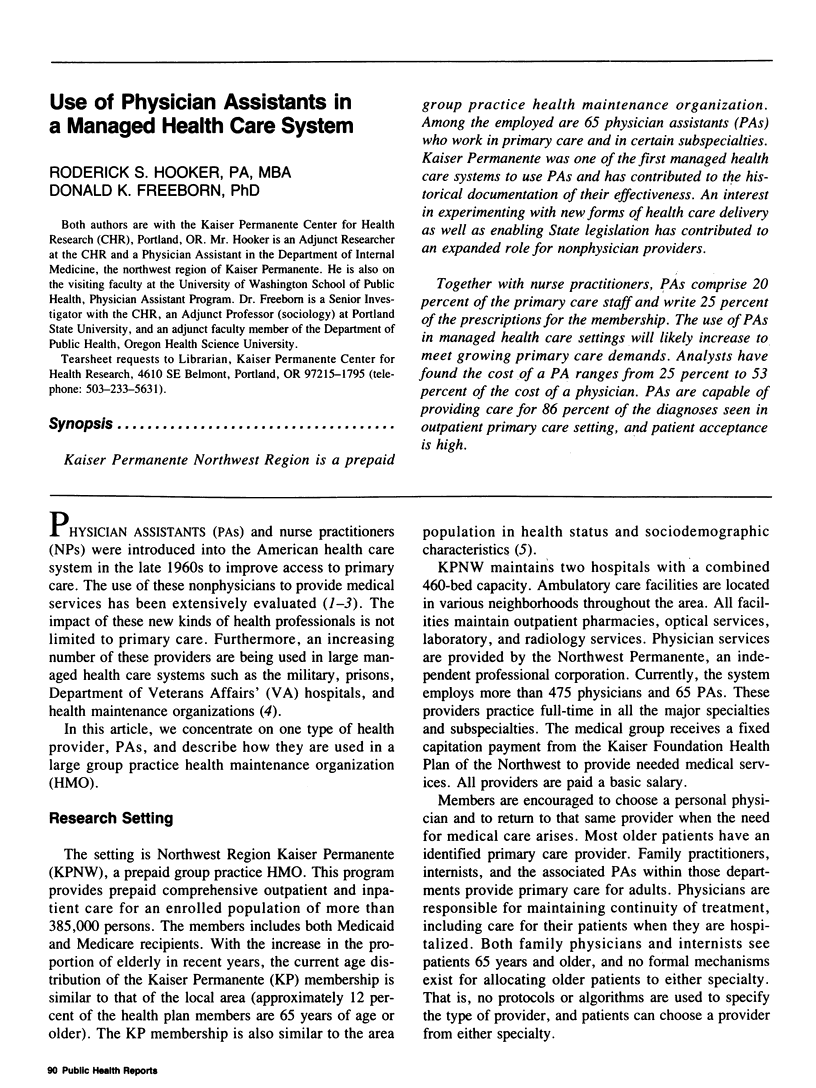
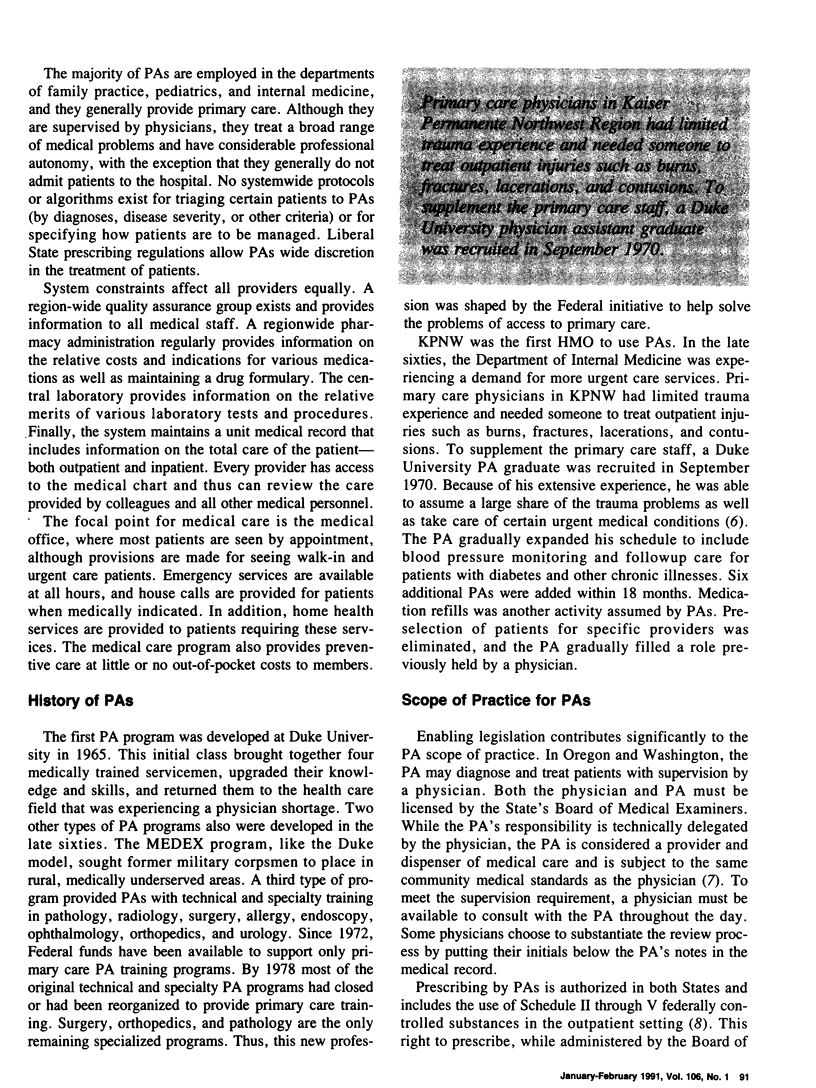
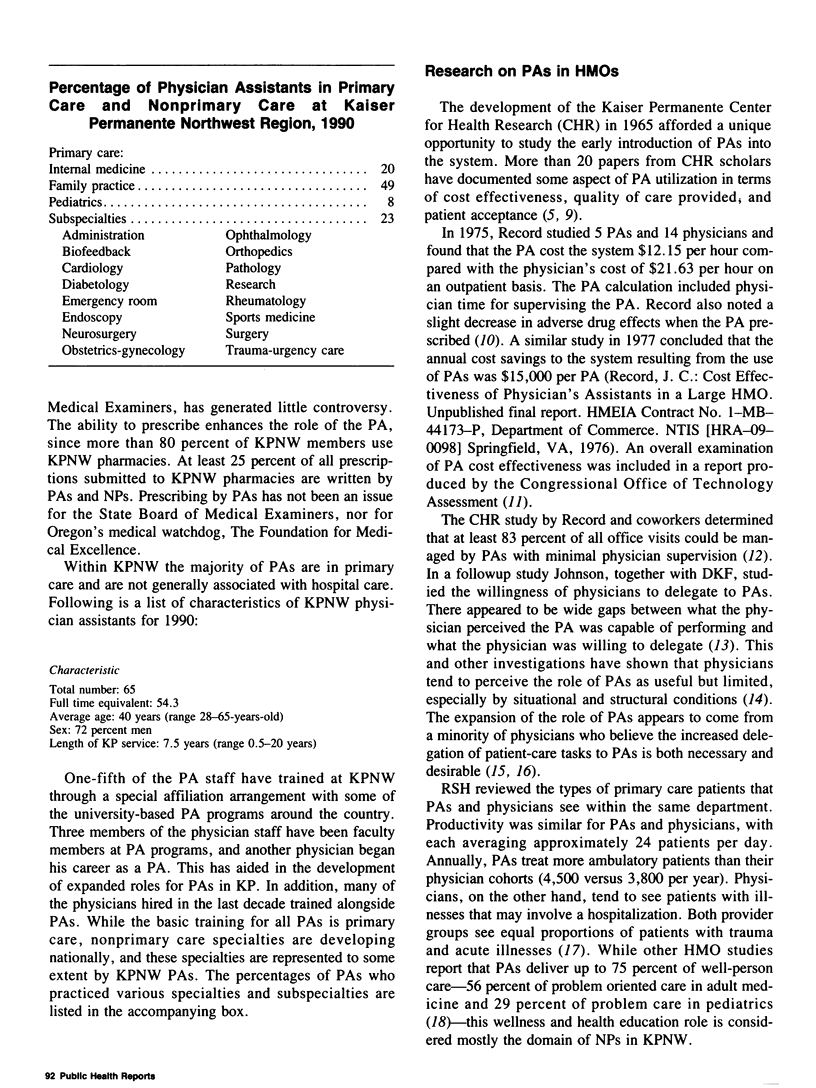
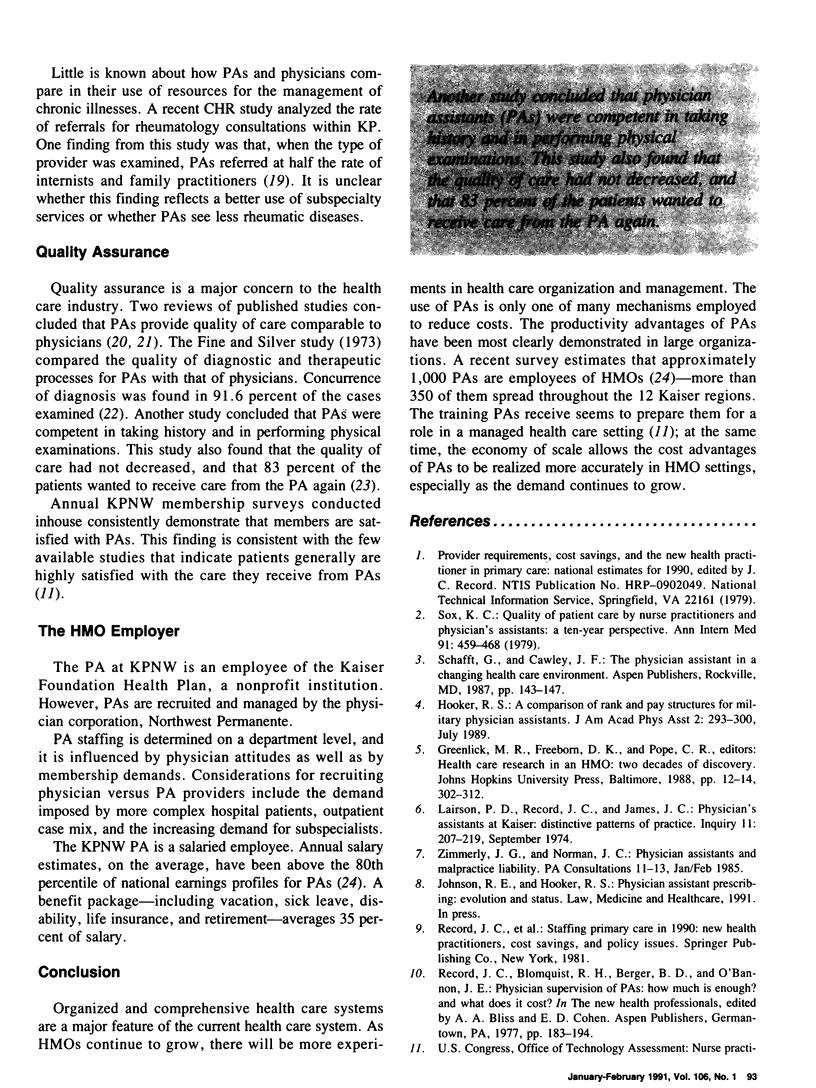
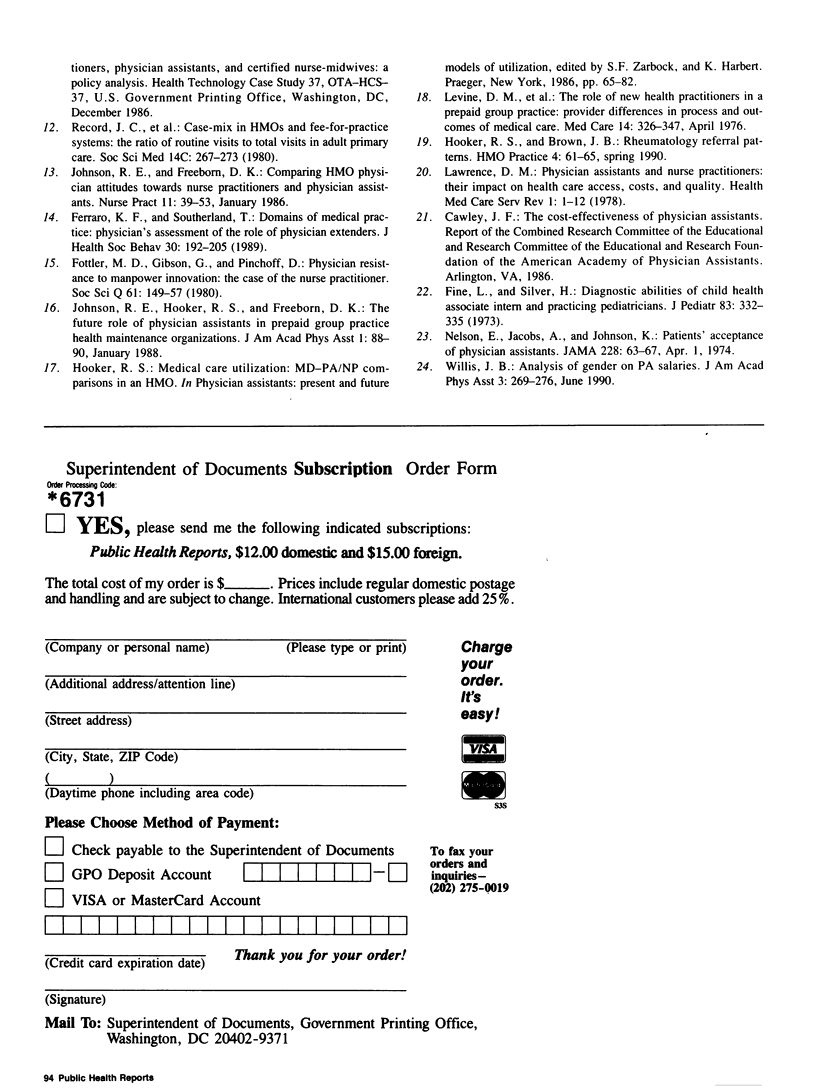
Selected References
These references are in PubMed. This may not be the complete list of references from this article.
- Ferraro K. F., Southerland T. Domains of medical practice: physicians' assessment of the role of physician extenders. J Health Soc Behav. 1989 Jun;30(2):192–205. [PubMed] [Google Scholar]
- Fine L. L., Silver H. K. Comparative diagnostic abilities of child health associate interns and practicing pediatricians. J Pediatr. 1973 Aug;83(2):332–335. doi: 10.1016/s0022-3476(73)80502-5. [DOI] [PubMed] [Google Scholar]
- Hooker R. S., Brown J. B. Rheumatology referral patterns. HMO Pract. 1990 Mar-Apr;4(2):61–65. [PubMed] [Google Scholar]
- Lairson P. D., Record J. C., James J. C. Physician assistants at Kaiser: distinctive patterns of practice. Inquiry. 1974 Sep;11(3):207–219. [PubMed] [Google Scholar]
- Lawrence D. Physician assistants & nurse practitioners: their impact on health care access, costs, and quality. Health Med Care Serv Rev. 1978 Mar-Apr;1(2):1, 3-12. [PubMed] [Google Scholar]
- Levine D. M., Morlock L. L., Mushlin A. I., Shapiro S., Malitz F. E. The role of new health practitioners in a prepaid group practice: provider differences in process and outcomes of medical care. Med Care. 1976 Apr;14(4):326–347. doi: 10.1097/00005650-197604000-00004. [DOI] [PubMed] [Google Scholar]
- Nelson E. C., Jacobs A. R., Johnson K. G. Patients' acceptance of physician's assistants. JAMA. 1974 Apr 1;228(1):63–67. [PubMed] [Google Scholar]
- Record J. C., Blomquist R. H., McCabe M. A., McCally M., Berger B. D. Case mix in HMOs and fee-for-service systems: the ratio of routine visits to total visits in adult primary care. Soc Sci Med Med Econ. 1980 Dec;14C(4):267–273. doi: 10.1016/0160-7995(80)90014-3. [DOI] [PubMed] [Google Scholar]
- Sox H. C., Jr Quality of patient care by nurse practitioners and physician's assistants: a ten-year perspective. Ann Intern Med. 1979 Sep;91(3):459–468. doi: 10.7326/0003-4819-91-3-459. [DOI] [PubMed] [Google Scholar]


